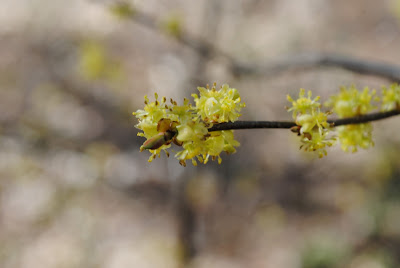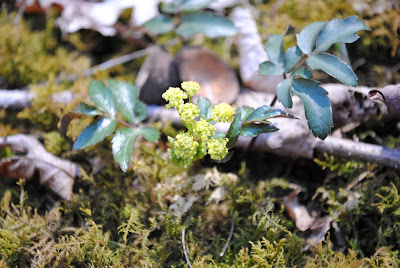I found out today that you can go back in time, sort of. If you travel North about a degree and a half and climb to about 3800 feet, you can revisit Spring. I joined the men of our church on Friday at Summit Lake in the Monongahela National forest for a camping trip. I wanted to fish a little, but was more interested in the hiking and wildflowers. Well this morning I set out with a fly rod, two cameras and a pack. Seven hours later, I had made an eight mile round trip, caught no fish but had seen dozens of ephemerals, many which had already bloomed and gone here at 3000 feet and 2000 feet nearby. The Trout Lillies were amazing, there were thousands of plants, millions maybe kajillions. I searched in vain for the white variety. The White and Red Trillium were fresh and Painted Trillium had just about fully opened. Showy Orchis were there but no buds yet. A partially opened Jack-in-the-Pulpit, Squirrel Corn, Dutchmen Breeches, a Viburnum, Rue Anemone, Dwarf Ginseng and others. On a side trip to the bog at Cranberry Glade I saw Marsh Marigold and wonder of wonders, Skunk Cabbage, A flower that I searched for in vain through most of March. They were everywhere in the bog and a few still had fresh blooms.
 |
| #43- Dwarf Ginseng |
 |
| #44- Hobblebush Viburnum (Not Quite Fully Blooming Yet, the outer flowers are sterile) |
 |
| #45- Painted Trillium |
 |
| Showy Orchis Growing in Rock Cleft |
 |
| Trout Lilly Everywhere |
 |
| #46- Skunk Cabbage |
 |
| #47- Marsh Marigold |
 |
#48- Wild Phlox
|
 |
| #49- Garlic Mustard, Another European Import from 150 years ago |
 |
#50- Dutchman's Breeches
|
 |
| Mixed Ephemerals: Red Trillium, Carolina Beauty, False Rue Anemone, Trout Lilly |
 |
| A Sedge |






















































